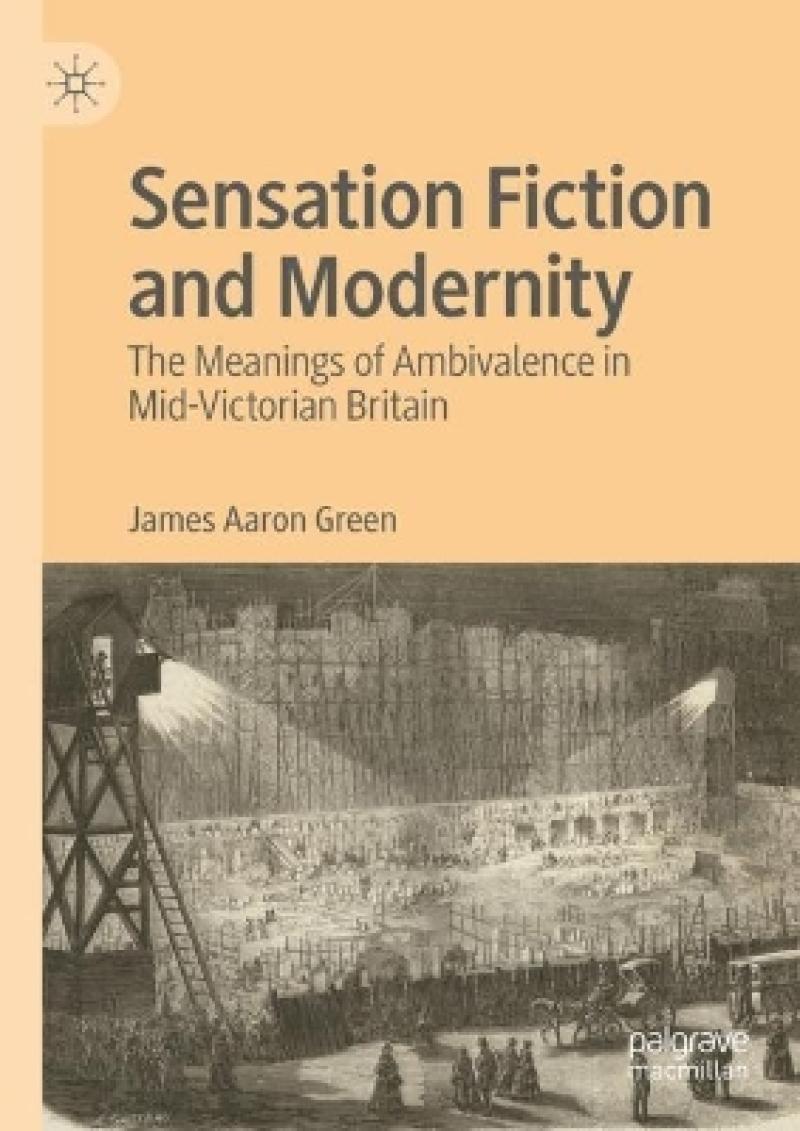This book re-reads the relationship between the Victorian sensation novel and modernity. Whereas critics have long recognized its appearance in the form of nervous subjects and technologically-enabled mobility, Green contends that sensation fiction also depicts modernity in the form of intellectual and moral discontinuity. Through closely historicist readings of novels by Wilkie Collins and Mary Elizabeth Braddon, as well as by Joseph Sheridan Le Fanu and Rhoda Broughton, this book traces how discontinuity is manifested in the suspenseful plotting of these fictions, through which readers are challenged to revise conventional assumptions about the world and adopt more contingent perspectives. The study demonstrates that reading for this sense of modernity does not merely uncover the genre's engagements with various mid-century contexts. More fundamentally, it broaches a new sense of the function and significance of sensation fiction: the acclimatization of its readers to the discontinuities of modern existence.
This book re-reads the relationship between the Victorian sensation novel and modernity. More fundamentally, it broaches a new sense of the function and significance of sensation fiction: the acclimatization of its readers to the discontinuities of modern existence.
1: Introduction.- 2: ‘Straight through those clear blue eyes into his soul’: dreams of transparency in mary elizabeth braddon’s the trail of the serpent (1860).- 3: ‘The curse that has always followed us’: (dis)inheriting the past in joseph sheridan le fanu’s wylder’s hand (1864).- 4: ‘Short-spanned living creatures’: evolutionary perspectives and the fate of progress in rhoda broughton’s not wisely, but too well (1867).- 5: ‘Can I say I believe in it too?’: hesitation and the difficulties of decision in wilkie collins’s armadale (1866).- 6: Conclusion.
This book re-reads the relationship between the Victorian sensation novel and modernity. Whereas critics have long recognized its appearance in the form of nervous subjects and technologically-enabled mobility, Green contends that sensation fiction also depicts modernity in the form of intellectual and moral discontinuity. Through closely historicist readings of novels by Wilkie Collins and Mary Elizabeth Braddon, as well as by Joseph Sheridan Le Fanu and Rhoda Broughton, this book traces how discontinuity is manifested in the suspenseful plotting of these fictions, through which readers are challenged to revise conventional assumptions about the world and adopt more contingent perspectives. The study demonstrates that reading for this sense of modernity does not merely uncover the genre's engagements with various mid-century contexts. More fundamentally, it broaches a new sense of the function and significance of sensation fiction: the acclimatization of its readers to the discontinuities of modern existence.
“In this well-contextualized and elegantly argued book, Green addresses the oft-discussed relationship between Victorian sensation novels and modernity, but whereas former critics have focused on speed, technology and the reading body, Green gives us a different Victorian modernity: one focused on discontinuity, hesitation, and moral and intellectual uncertainty. Reading visuality through Braddon, inheritance and commerce through LeFanu, evolution and heritability through Broughton, and the importance of hesitation and uncertainty through Collins, Green shows how discontinuity and disruption are crucial to sensation fiction's suspenseful plots, but also their epistemological disruptions. Green thus offers a new and important perspective on a range of sensation authors and texts.” (Pamela K. Gilbert, Albert Brick Professor of English at the University of Florida)
“Through rich and detailed readings, Green corrects the relatively narrow interpretation of modernity that has shaped criticism on the genre thus far. His book convincingly relocates sensation fiction into a wide range of previously unconsidered (or rarely considered) contexts – from pseudo-science to evolutionary science, and urban tourism to Anglo-Irish ideas of inheritance – providing us with new and compelling ways to conceptualise 1860s sensationalism.” (Anne-Marie Beller, Senior Lecturer in Victorian Literature, Loughborough University)
“Green's Sensation Fiction and Modernity provides an innovative and sophisticated approach to re-conceptualizing how sensation novels function. By constructing the experience of modernity through disruptive temporality, the monograph moves responses to sensational narratives away from simplistic readings emphasizing only scandalous behaviour and sensory reader response. Instead, its carefully contextualized analysis of four texts (some canonical, some not), successfully demonstrates how sensationalism trained its audience to confront the shifting ambiguities of cultural discontinuity.” (Richard Nemesvari, Professor of English, Wilfrid Laurier University)
Produktdetaljer
Biografisk notat
James Aaron Green is a postdoctoral research fellow (ÖAW APART-GSK) at the University of Vienna, Austria, specializing in nineteenth- and early-twentieth-century popular fiction. His work is published in Gothic Studies, the Journal of Victorian Culture, and Wilkie Collins in Context (2023) and is due to appear in Gothic Dreams and Nightmares (2024). His recent work in literary age and aging studies is forthcoming in the book Fictions of Radical Life Extension: Living Forever from the Fin de Siècle to the First World War.
